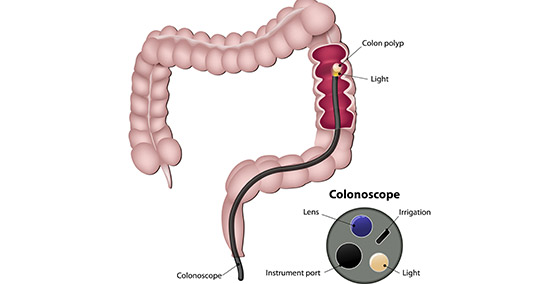
The Latest and greatest treatments for IBD: What to believe
What’s the best IBD medicine for me? Confusion on television and in your inbox....
See moresign up for our newsletter
SubscribeA colonoscopy is generally considered the essential test to diagnose Crohn's disease and ulcerative colitis (UC). All of the other tests may suggest that Crohn's or UC as the reason for the patient's symptoms, but a colonoscopy is the test that will prove it's there. Other endoscopy techniques (scopes) can also be useful, and one day, may replace colonoscopy to diagnose and monitor IBD.
Colonoscopy
A colonoscopy is the procedure where a doctor inserts a flexible scope into the rectum and guides it through the large intestine (the colon). When evaluating for IBD, the scope is usually advanced into the last portion of the small intestine, known as the terminal ileum. This is not always possible, since there may be swelling of the valve between the two intestines. The valve may be at an awkward angle for the scope or the area may have too much thick fecal matter to safely proceed.
What the doctor sees usually can usually distinguish a healthy colon from one that has Inflammatory Bowel Disease (IBD). In the healthy colon, the folds and blood vessels are well seen and smooth.
In UC, the vessels can't be seen because of swelling and a pebbly surface in the areas of active disease. Ulcers may also be present on the surface. These features of UC are most prominent in the rectum or just above it and proceed up the colon. The folds are less prominent as well.
In Crohn's disease, the ulcers are often deeper and/or they may be scattered throughout the large and small intestine. In pediatric Crohn's disease, 40% of the cases just involve the small intestine, so the colonoscopy may not provide a diagnosis. This seems to be far less common in adult patients, where the disease is usually in the colon or the end of the small intestine, known as the terminal ileum.
To confirm the diagnosis, samples are usually obtained. A pinch of tissue (a biopsy) can be looked at under the microscope to see if the features are typical of IBD and what type (Crohn's or UC). Some patients and parents hear the term biopsy and automatically become concerned about the possibility of cancer, because the same sampling techniques are also used to diagnose cancers. But in the case of IBD, biopsies are obtained to get a closer view of the intestinal surface. While Crohn's disease and UC share many of the same symptoms, certain features under the microscope are specific to each of the diseases. Additionally, fecal matter (stool) in the intestine can be sampled to rule out infections as a cause of the inflammation.

This article, as well as all others, was reviewed and edited by a member of our Medical Advisory Board.
Subscribe Be the first to know